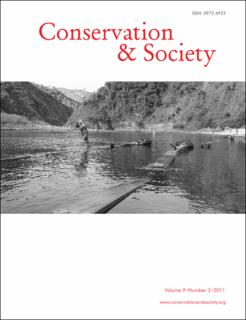| dc.contributor.author | Lescureux, Nicolas | |
| dc.contributor.author | Linnell, John Durrus | |
| dc.contributor.author | Mustafa, Sabit | |
| dc.contributor.author | Melovski, Dime | |
| dc.contributor.author | Stojanov, Aleksander | |
| dc.contributor.author | Ivanov, Gjorge | |
| dc.contributor.author | Avukatov, Vasko | |
| dc.coverage.spatial | Europe, Macedonia | en_US |
| dc.date.accessioned | 2023-07-06T12:51:22Z | |
| dc.date.available | 2023-07-06T12:51:22Z | |
| dc.date.created | 2012-01-19T09:23:48Z | |
| dc.date.issued | 2011 | |
| dc.identifier.citation | Conservation and Society. 2011, 9 (3), 189-201. | en_US |
| dc.identifier.issn | 0972-4923 | |
| dc.identifier.uri | https://hdl.handle.net/11250/3076627 | |
| dc.description.abstract | From a conservation point of view, Macedonia’s brown bear (Ursus arctos) population appears to be a key link in the distribution of one of Europe’s largest brown bear populations, the Dinaric-Pindos population. The lack of information concerning the bear population in the Republic of Macedonia and bear acceptance by local people inspired us to explore local knowledge and perceptions concerning bears that could be relevant for their conservation. Accordingly, we adopted a qualitative approach using semi-structured interviews to determine how the specifi c behaviour and ecology of bears can infl uence, through interactions, local peoples’ knowledge and perceptions. Our results show that due to numerous interactions, the informants’ knowledge appeared to be detailed and consistent, both internally and with existing scientifi c literature about bears. Bear specifi c behaviour allows them to be located, individualised and thus appropriated by villagers, and also to be identifi ed as an alter-ego. For the villagers, the occasional harmfulness of a bear is not the result of a general characteristic of bears in general, but of some individual bear’s behaviour. Finally, bears enjoy a relatively good image as long as local people can react against individuals that cause damage. However, direct or indirect poaching of bears is still a main concern for the Macedonian brown bear’s conservation | en_US |
| dc.description.abstract | The King of the Forest: Local Knowledge About European Brown Bears (Ursus arctos) and Implications for Their Conservation in Contemporary Western Macedonia | en_US |
| dc.language.iso | eng | en_US |
| dc.rights | Navngivelse 4.0 Internasjonal | * |
| dc.rights.uri | http://creativecommons.org/licenses/by/4.0/deed.no | * |
| dc.title | The King of the Forest: Local Knowledge About European Brown Bears (Ursus arctos) and Implications for Their Conservation in Contemporary Western Macedonia | en_US |
| dc.title.alternative | The King of the Forest: Local Knowledge About European Brown Bears (Ursus arctos) and Implications for Their Conservation in Contemporary Western Macedonia | en_US |
| dc.type | Peer reviewed | en_US |
| dc.type | Journal article | en_US |
| dc.description.version | publishedVersion | en_US |
| dc.rights.holder | © 2011 The Authors | en_US |
| dc.subject.nsi | VDP::Samfunnsgeografi: 290 | en_US |
| dc.subject.nsi | VDP::Human geography: 290 | en_US |
| dc.source.pagenumber | 189-201 | en_US |
| dc.source.volume | 9 | en_US |
| dc.source.journal | Conservation and Society | en_US |
| dc.source.issue | 3 | en_US |
| dc.identifier.doi | 10.4103/0972-4923.86990 | |
| dc.identifier.cristin | 889741 | |
| dc.relation.project | Norges forskningsråd: xxxxxx | en_US |
| dc.relation.project | Andre: French Fyssen Foundation | en_US |
| dc.relation.project | Andre: Swiss MAVA Foundation | en_US |
| cristin.unitcode | 7511,2,0,0 | |
| cristin.unitname | Avdeling for terrestrisk økologi | |
| cristin.ispublished | true | |
| cristin.fulltext | original | |
| cristin.qualitycode | 1 | |

